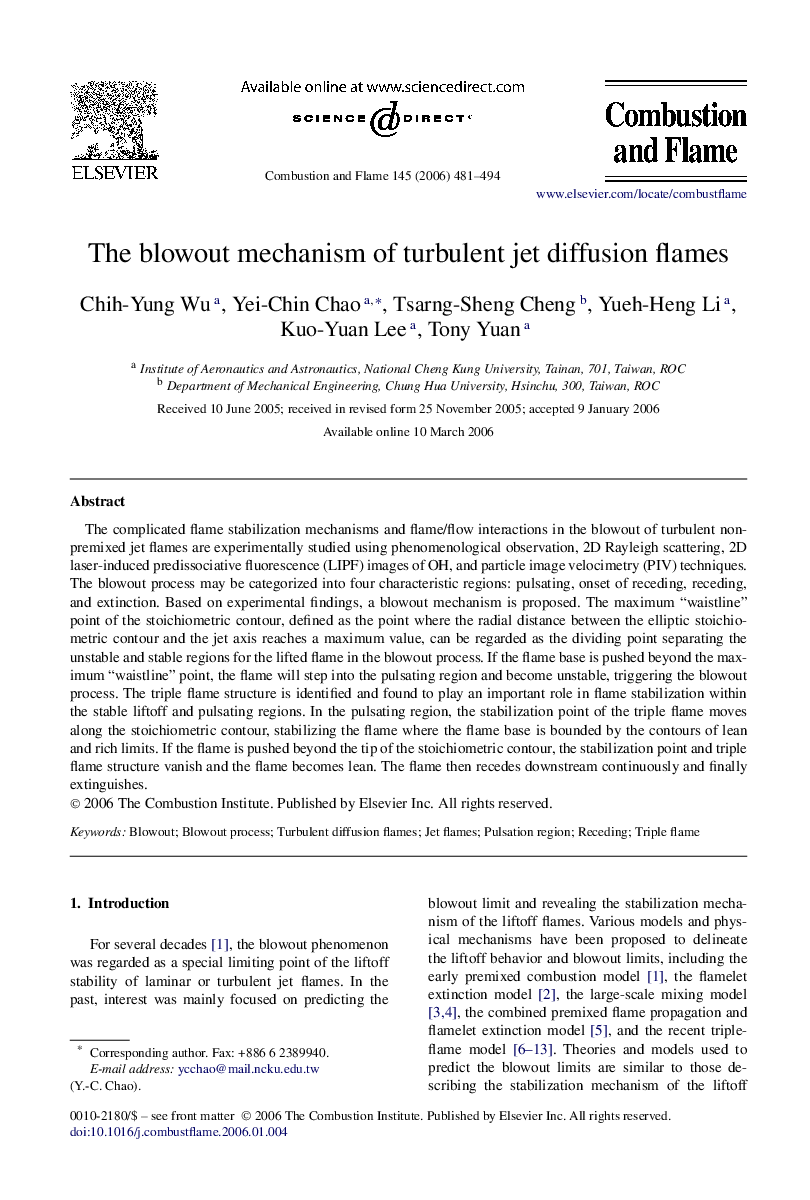| Article ID | Journal | Published Year | Pages | File Type |
|---|---|---|---|---|
| 170153 | Combustion and Flame | 2006 | 14 Pages |
The complicated flame stabilization mechanisms and flame/flow interactions in the blowout of turbulent nonpremixed jet flames are experimentally studied using phenomenological observation, 2D Rayleigh scattering, 2D laser-induced predissociative fluorescence (LIPF) images of OH, and particle image velocimetry (PIV) techniques. The blowout process may be categorized into four characteristic regions: pulsating, onset of receding, receding, and extinction. Based on experimental findings, a blowout mechanism is proposed. The maximum “waistline” point of the stoichiometric contour, defined as the point where the radial distance between the elliptic stoichiometric contour and the jet axis reaches a maximum value, can be regarded as the dividing point separating the unstable and stable regions for the lifted flame in the blowout process. If the flame base is pushed beyond the maximum “waistline” point, the flame will step into the pulsating region and become unstable, triggering the blowout process. The triple flame structure is identified and found to play an important role in flame stabilization within the stable liftoff and pulsating regions. In the pulsating region, the stabilization point of the triple flame moves along the stoichiometric contour, stabilizing the flame where the flame base is bounded by the contours of lean and rich limits. If the flame is pushed beyond the tip of the stoichiometric contour, the stabilization point and triple flame structure vanish and the flame becomes lean. The flame then recedes downstream continuously and finally extinguishes.
